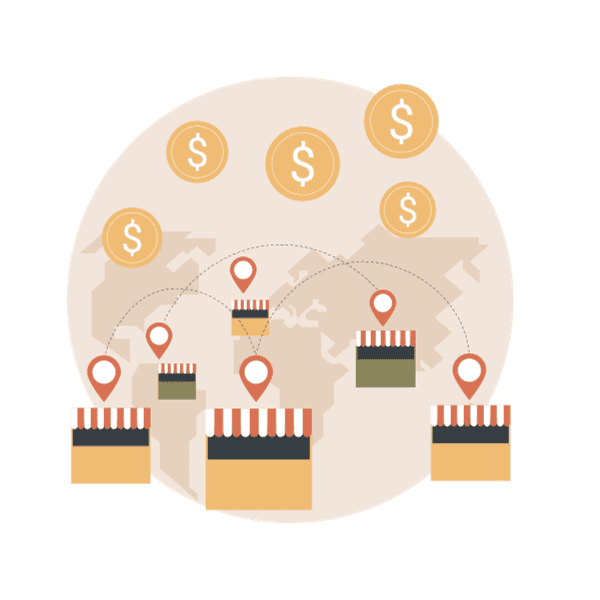What Franchise Model is Right for your Business?
Franchising offers amazing growth potential for any proven concept. However, there is no one sized fits all approach to effectively implementing this growth strategy. Its vital that you understand the various franchise models and the nuances between them before diving into franchising.
The Various Franchise Models
Franchising allows entrepreneurs to expand their reach and grow their brand without expending the capital of expansion through company owned outlets. Franchise opportunities may include a unit franchise, multi-unit franchise, area representative franchise, area developer franchise, or master franchise. The extent of resources required from an operational standpoint vary across franchise models. The most basic form of franchising is the unit franchise. This is what most people think when they refer to a franchised business. Each offering type requires its own independent franchise disclosure document (or FDD) because each offer involves many unique aspects. Franchise opportunities cannot be sold in the United States without preparation and disclosure of a valid disclosure document. You can learn more about federal franchise laws and state franchise laws by browsing our website. All would-be franchisors should work closely with a franchise attorney to develop the appropriate document set. With careful research and consideration of factors such as investment costs, support available from the franchisor, and the existing market for the franchise, business owners can strategically leverage franchising to grow their brand and increase profitability.
The Unit Franchise
The most basic form of franchising involves the franchisor contracting with individual owners (individuals or entities who become “franchisees”) to operate a customer facing business modeled after the franchisor’s business concept. This is referred to as “Unit” franchising or a Unit franchise offer. Unit franchisees purchase the right to offer the franchisors goods and services and follow their systems and process in exchange for certain initial and ongoing fees.
Ultimately, the customer facing unit franchise is a part of every franchise model. The unit franchisee will work with the franchisor, and in some cases a subfranchisor or area representative, to represent the franchise brand. Typically, the unit franchisee pays an initial franchise fee before beginning operations and then pays ongoing fees such as royalty fees, advertising fees, and technology fees for the life of the relationship. Successful franchisors create happy and successful franchisees by providing value in training, support, and the systems and processes developed by the validated business model.

The Multi-Unit Franchise
The multi-unit franchise model allows individual franchisees to purchase the right to operate multiple customer facing franchised business through a single franchise offering. Essentially, a multi-unit offering allows a franchisee to purchase the rights to develop multiple units on an established development schedule. Multi-unit offers are typically for three to five unit franchises. Often, the franchisee will sign a multi-unit agreement to establish the schedule and a separate unit franchise agreement for each franchised location. However, unlike a area representative, area developer, or master franchise offer (discussed below) the offer of a multi-unit franchise can typically be facilitated through one single franchise disclosure document with special disclosures for the multi-unit component. Special disclosures are required because of the increased cost and responsibility involved in operating multiple locations. The multi-unit offer is similar to the area developer model and you may hear the terms talked about synonymously in some cases; however, we differentiate the two because they can be vastly different.
The Area Developer Franchise
The key distinction between an area developer and multi-unit franchisee is the fact that an area developer may develop the territory through a combination of its own franchised locations and units owned and operated by other independent franchisees. Essentially, the area developer commits to developing a larger territory, such as a region or state, but they do not have to develop each location with their own capital. They can recruit other franchisees to locate businesses within this territory. The area developer is often compensated through a percentage of the initial franchise fee and ongoing royalties. The area developer often provides training and ongoing support. From the franchisor perspective, the area developer pays an upfront fee for these rights and becomes a sales agent for the franchisor. This model may allow a franchisor to develop more quickly without deploying as many resources on recruitment and operational support. Likewise, the area developer can prove the model works by developing a validator and then they can profit from unit franchisees within the development territory. This type of offering requires its own unique disclosure document.
The Area Representative Franchise
The area representative franchise is similar to the area developer franchise with one key distinction. In the area developer context, the area developer has the right to develop the unit locations within the territory. In the area representative context, the obligation to maintain a schedule exists; however, there is no corresponding right given to the area representative to develop the customer facing unit locations. The franchisor elects how the territory is developed. Meaning, the unit territories are sold to whomever wants them. While the area representative can purchase these unit locations, they do not typically have any right of first refusal or similar right to develop them for their own interest. The area representative is compensated similarly to an area developer. They will often provide sales and ongoing support in exchange for a percentage of the franchise fee and the ongoing royalties. However, area representatives do not typically have the same level of management control as an area developer. Franchisors choose this model because it provides upfront capital from the area representative fee, allows flexibility, and can accelerate growth. This type of offering requires its own unique disclosure document.
The Master Franchise
The master franchise model allows an individual franchisee to step in the shoes of the franchisor and become a subfranchisor. The master franchisee purchases the right to franchise the brand in a large geographical area. Often times the rights are conveyed in a master franchise are for an entire country, multiple states, or other large geographical region. The master franchisee, or subfranchsior, is legally responsible for serving as the franchisor in the master franchise territory. This means the master franchisee, or subfranchisor, is responsible for drafting and disclosing the FDD, contracting, training, support, and each of the elements involved in franchising. This type of offering requires its own unique disclosure document and requires the franchisor to relinquish a greater level of control. Relinquishing this control has benefits and drawbacks. Many times the franchisor will provide a template FDD to serve as guide for subfranchisors to use in disclosing prospects; however, the subfranchisor does maintain a greater level of independence than a typical franchise operator. One major benefit for franchisors is that this model shifts many responsibilities from the franchisor to the subfranchisor. Its a great model to deploy in international franchising or when the franchisor simply doesn’t want to maintain day-to-day operational support.


